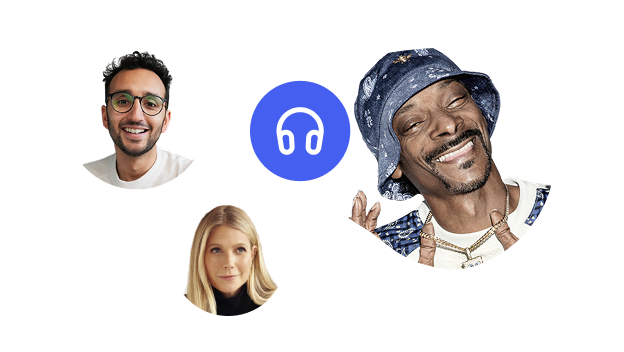Educators recognize that general education curricula aren't always suitable for students with disabilities who need extra support.
Hence, they rely on IEP and 504 plans. Although similar at first glance, the two plans differ in several ways. This article will discuss how best to use an IEP or 504 plan.
What is an Individualized Education Program (IEP)?
When children struggle to keep up with their peers in a traditional learning environment, the term IEP often confuses parents. IEP is an acronym for Individualized Education Program, occasionally called an Individualized Education Plan.
An IEP is a legal document regulated by IDEA (Individuals with Disabilities Education Act). Additionally, it ensures that eligible children receive education and improve social skills through a measurable program that fits their unique needs.
Public schools use IEPs for children who meet the eligibility criteria. IEPs are unavailable in private schools. However, private schools sometimes have service plans to ensure all students have equal access to quality education.
What an IEP includes
An IEP serves as a foundation that outlines the child's needs, the nature of their disability, and which education and related services would best benefit their educational performance.
In addition to information about the student, the program's first page contains details about the IEP team. The IEP team usually consists of a case manager, a special education teacher, parents or caregivers, and a resource teacher.
The following sections describe assessments of the child's current educational performance and identify improvement areas. Next, the plan lists annual goals the child should meet through appropriate accommodations. Additionally, it highlights related services necessary outside of the school year.
The final pages contain the "Supplementary aids and services" section that details the modifications and accommodations the child should receive. The accommodations depend on the student's needs but may include preferential seating, extra time to complete tests, and less homework.
What is a 504 plan?
Schools use 504 plans to support students with disabilities and prevent discrimination. Although they don't fall under special education, they're regulated by Section 504 of the Rehabilitation Act of 1973, a civil rights law.
This law stipulates that all students deserve equal access to free appropriate public education (FAPE). This is the primary purpose of 504 plans, to ensure children with disabilities or learning challenges receive the same educational opportunities as their peers.
What a 504 plan includes
A typical 504 plan includes accommodations. It doesn't alter the course content. Instead, it recommends the most suitable learning methods based on the child's needs.
For example, a student could be allowed to take a test for an extended time in the least restrictive environment, like a quiet classroom. Furthermore, they may receive outlines of their lessons to keep up with the content.
However, 504 plans rarely offer extensive special education services like language therapy. They support students with special needs in general education who don't qualify for IEP.
IEP vs. 504 plan – Key differences
Let's look at the most notable differences between these plans to clear up any lingering confusion.
What these plans do
Individualized Education Programs are comprehensive blueprints for a student's special education in public school.
On the other hand, a 504 plan helps schools determine the most effective ways to remove educational barriers for children with special needs.
The laws applying to them
The Individuals with Disabilities Education Act (IDEA) applies to Individualized Education programs, while Section 504 of the Rehabilitation Act of 1973 applies to 504 plans. The former is a special education law, while the latter is a federal civil rights law.
Qualification criteria
To qualify for an IEP, a child must meet two requirements:
- They must have one or several of the 13 disabilities recognized by IDEA. The list includes specific challenges like ADHD, autism spectrum disorder (ASD), dyslexia, and more.
- The learning challenges must hinder a child's ability to thrive in general education.
While qualifying for a 504 plan involves meeting two requirements, the criteria are more lenient. To receive a 504 plan, a child must:
- Have any disability
- Struggle to make progress in a general education classroom due to their disability
Evaluations
With 504 plans, parents and guardians can't ask the school district to hire an outside expert to perform an independent external evaluation. Parents can request an external assessment for IEPs, but the school district may reject the request.
Standardization
An IEP is a written document that must include the child's needs, current academic level, annual goals, and a list of necessary services. Moreover, it details when the child will receive the services and how they'll participate in general education activities through modifications and accommodations.
In comparison, 504 plans follow no set standard. Still, they're expected to include the following:
- The accommodation and services to target a child's unique needs
- A list of people who will provide the appropriate services and support
- The name of the person who will ensure the school implements the plan
Who creates the plan
IEP teams create plans that cater to children qualifying for the program. An IEP team consists of:
- The child's caregiver or parent
- A general education teacher
- A special education teacher
- A school psychologist
- A representative of the school district
The team holds an IEP meeting at least once a year to assess the child's progress.
The team that crafts a 504 should know the child and how to interpret evaluation data. The people who create a 504 plan are usually:
- The school principal
- Special and general education teachers
- The caregiver or parent
Which should you choose?
A 504 plan works best for students who can keep up with their peers in a general education classroom with some accommodations. Experts recommend an IEP for children with specific learning disabilities covered by IDEA. IEP is also a better option for children with severe health impairments.
Speechify – The text to speech app that supports both programs
Many companies have started developing TTS software that could help students with learning disabilities. But these technologies pale in comparison to Speechify, the most robust product on the market.
Educators can use Speechify to help their learners tackle more complex reading materials. Furthermore, they can modify the reading pace to suit a child's needs.
Most importantly, it supports both 504 and Individualized Education Programs. Try it today and see how it can benefit your child or student.
FAQ
Is 504 or IEP stronger?
An IEP provides eligible children with more comprehensive services than a 504 plan.
What are the similarities between an IEP and a 504 plan?
Both help students with learning disabilities improve their academic performance.
Is there a downside to having a 504 plan?
Unlike IEPs, 504 plans don't guarantee specialized instruction for students.
Why do some schools have 504 plans and not IEPs?
Understaffed public schools sometimes don't offer IEPs because they lack the expert personnel to help craft the program.





